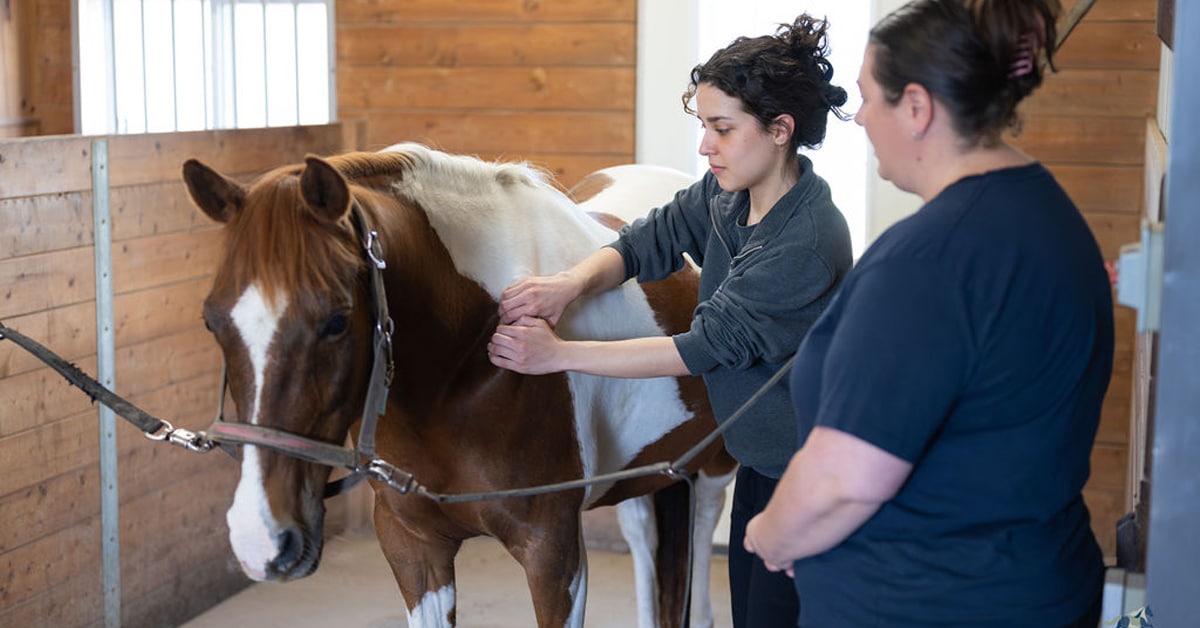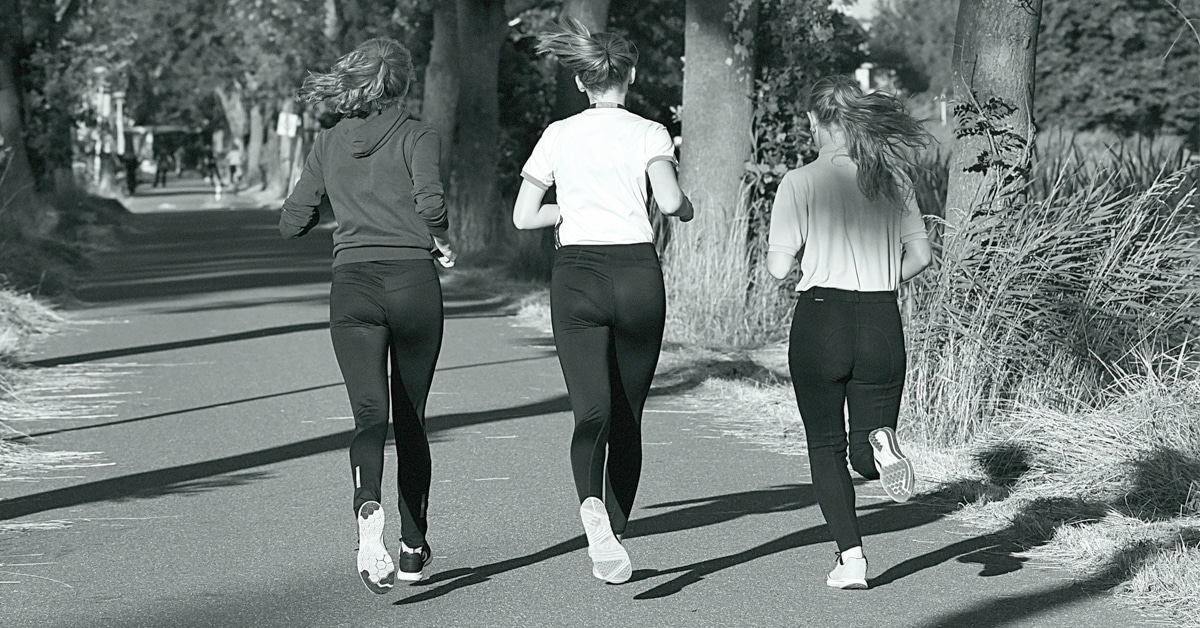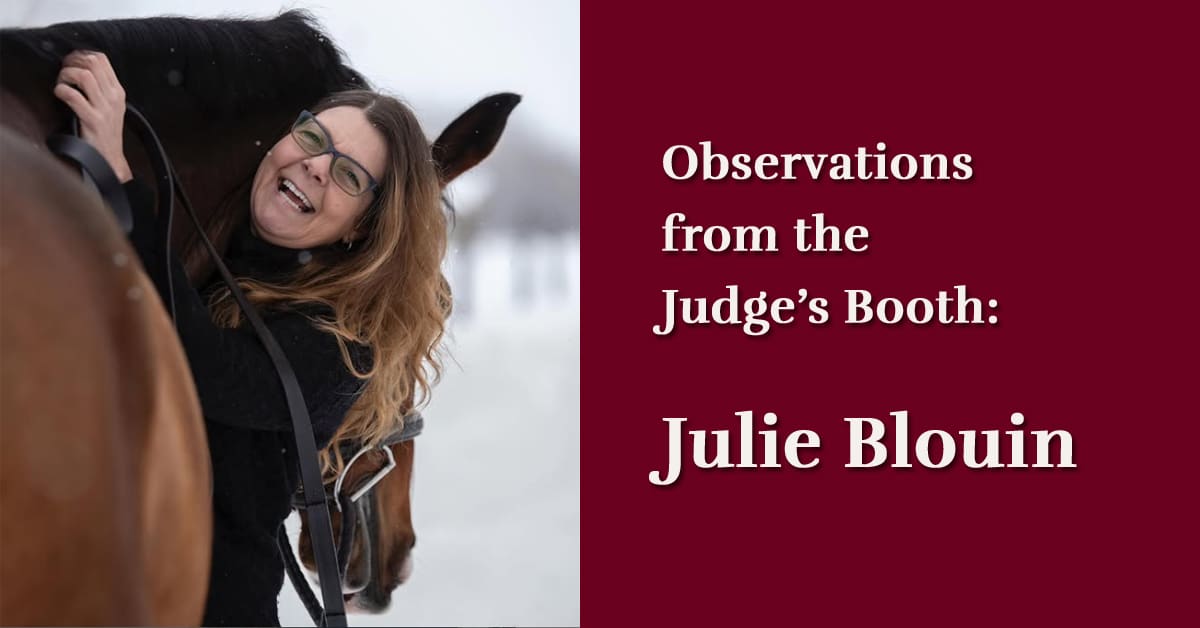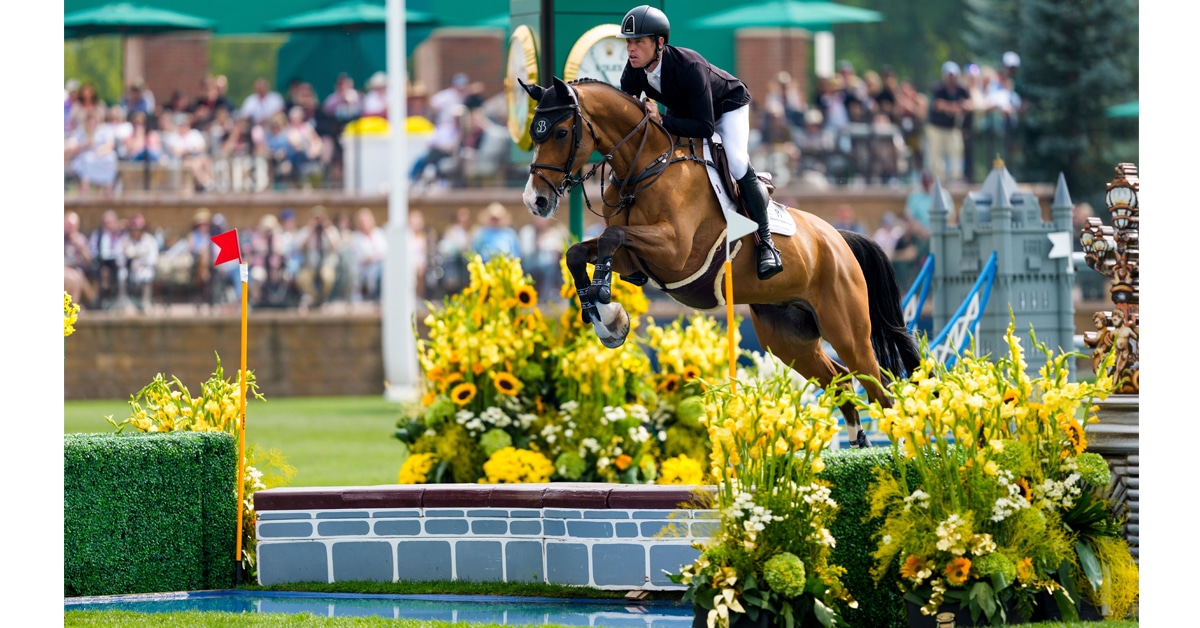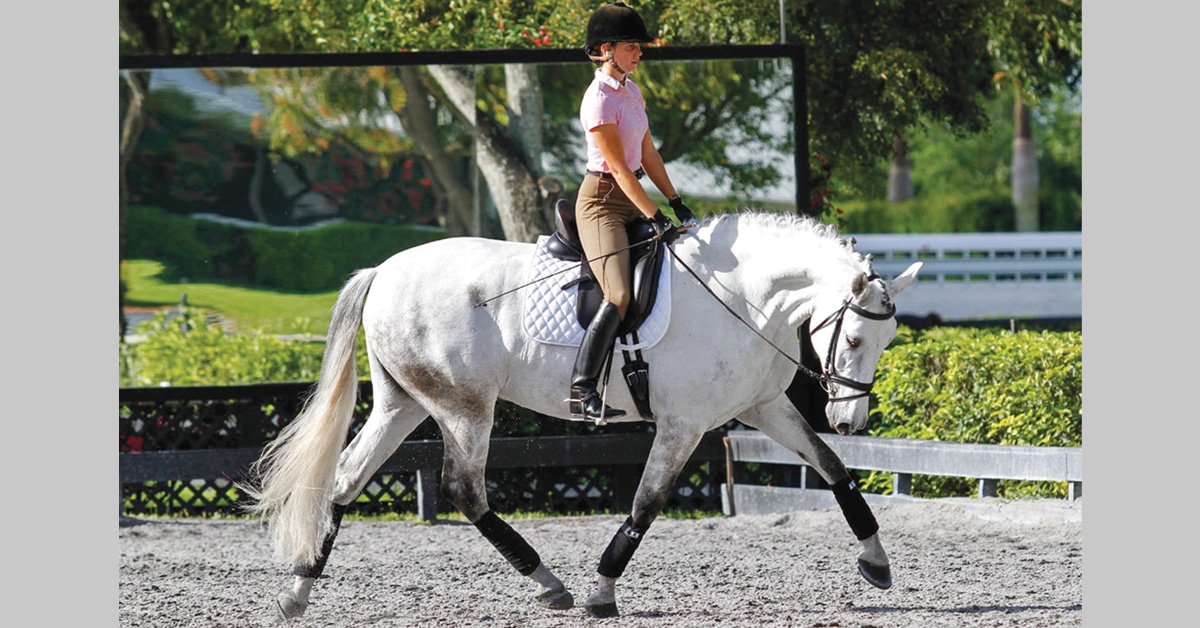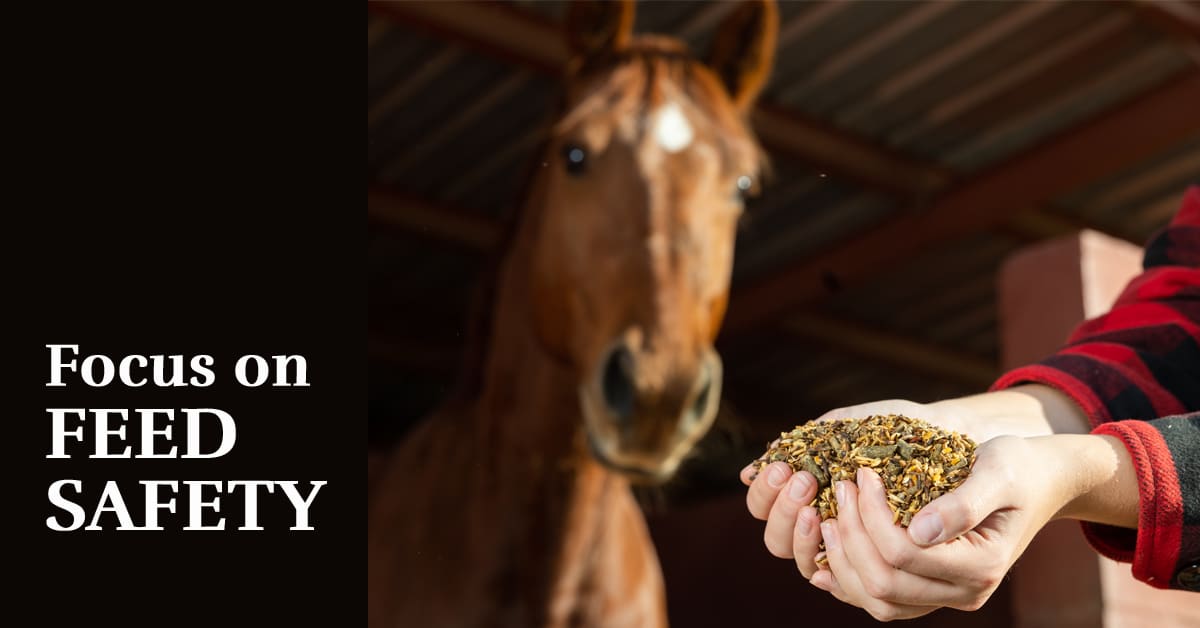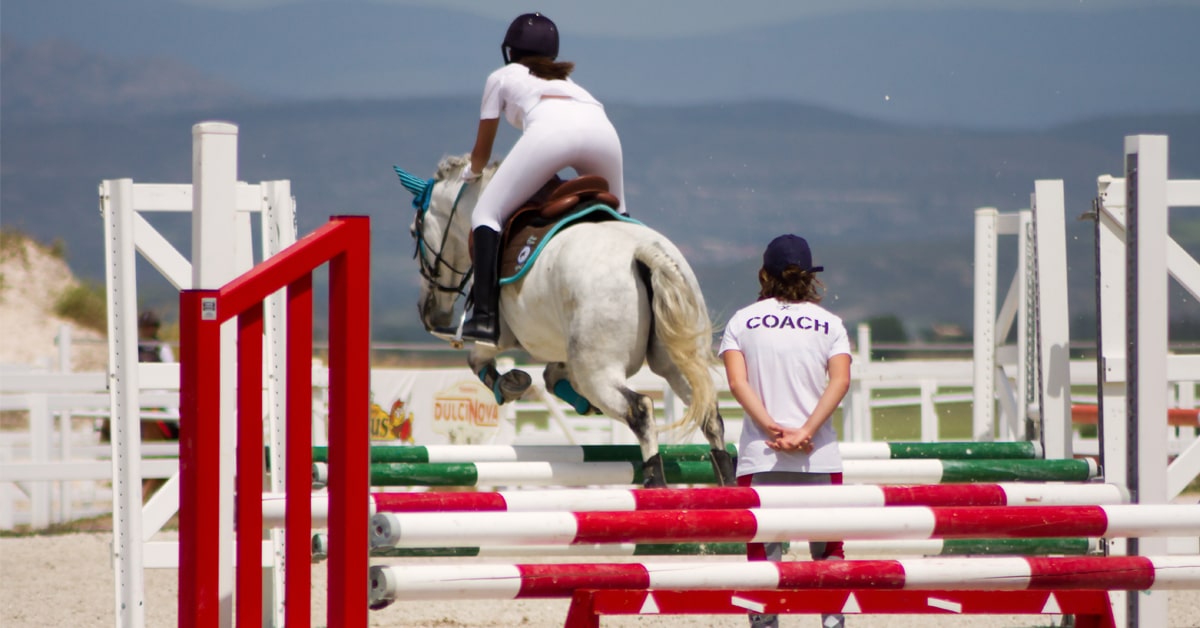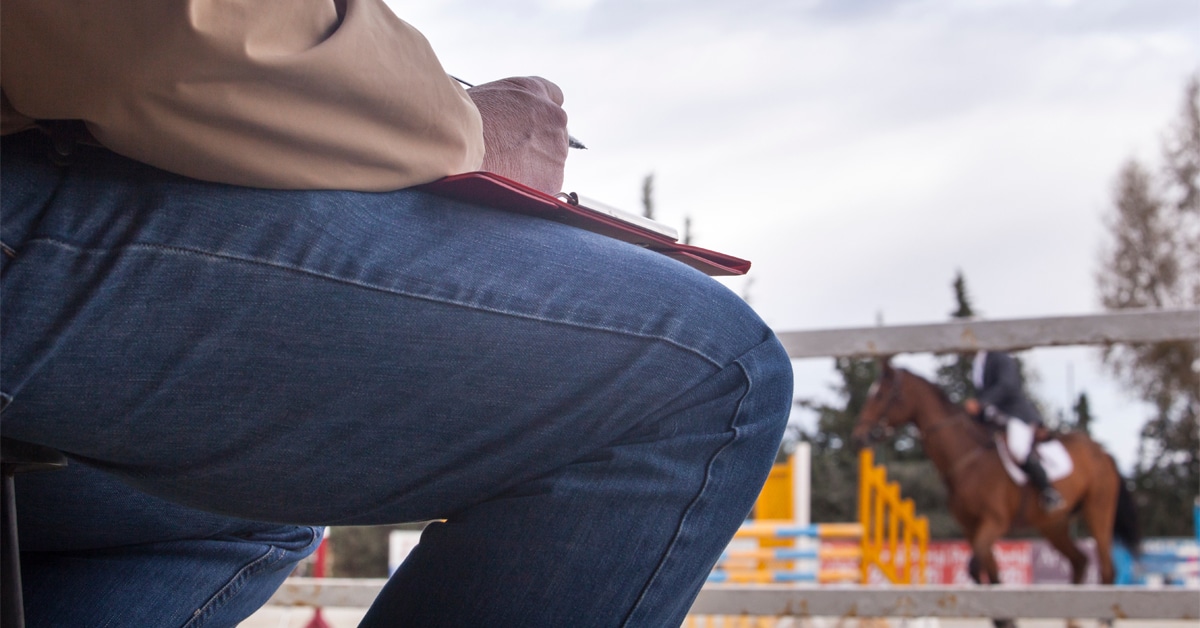A hunter class is proceeding smoothly, but something goes awry – a horse’s artificial tail comes unfastened, a loose dog runs into the ring, a gust of wind blows a jump down. What’s a judge to do?
These types of unexpected mishaps do happen and senior international hunter judge, course designer, coach and author Randy Roy has experienced many of them. He decided to document mishaps he’s witnessed and tales he’s collected from other judges. Here are 10 scenarios that aren’t in the rule book and require a split-second decision. Roy explains what he would do, but adds that these are just guidelines, and it’s up to the individual judge’s discretion.
1. Coming Undone
A pony or horse’s artificial tail or extension comes loose during a class and is dragging on ground, or falls off. The loose tail may not cause the horse’s rider to lose, but will be reflected in the score, as it is distracting and could cause a mishap. Riders and trainers should ensure fake tails are properly secured, adds Roy.
2. Gate Crasher
A horse comes down and rubs a jump so hard that while the top rails stay in the cups, the gate underneath falls to ground. Roy marks it as a hard rub and the rider’s score will be in the low 70s.
3. Not Invited
A loose horse jumps into a ring while a class is underway and a rider and horse are on course. After the loose equine is caught, the other horse’s rider can 1. Continue from that point forward; 2. Start again from the beginning of the course; or 3. Take a few minutes to leave the ring to calm down and regain focus, then start again (likely the best option, says Roy)
4. Airplane Mode
Your mom or friend calls your cell phone while you’re in a class at the show. The ringing can be heard by the other riders and judge. It’s distracting and discourteous, says Roy, and while it doesn’t mean elimination, it will mean a lower score. Turn off the phone or leave it at the in-gate.
5. Unscheduled Dismount
A rider falls off during a flat class and the judge calls for the class to halt so the horse can be caught and escorted out of the ring. Two other riders decide to dismount so they can contain their horses. Roy doesn’t eliminate those riders and allows them to resume their rides, even if they have to leave the ring to remount. The class is on hold anyway, he points out, and dismounting is often the safer option.
6. Don’t Go There
You, your parent or your trainer want to ask the judge about your round, so you approach him or her. This is not proper etiquette. Follow protocol and ask a steward to request an audience with the judge. The steward should be present during any discussions with the judge to mitigate any conflict and report anything that needs to be reported. Roy says often people will ask about the horse that beat them, but judges can’t discuss any other horses or riders. Many riders want to know what they can do better, but Roy says he’s guarded about that, as often a trainer is present and can be offended. The judge is there only to observe and provide a score, not to give a clinic or lesson.
7. Off Course
In an under-saddle class, a rider is having a great ride and is in line for a good ribbon. The horses have worked one way and now are asked to go the other direction. The rider chooses to circle in the middle of the ring, gets too close to a jump, jumps it, continues on and gets in line at the end of the class. If the judge sees it, the rider is eliminated, as it’s a flat class with no jumping. But if the judge missed it, he can’t acknowledge what he or she didn’t see, and the rider won’t be excused.
8. Blinded by the Light
Some classes start early in the morning, before full daylight. A truck is parked at the end of the ring, facing a line the horse has to jump. As the horse approaches the line, the truck starts and its lights come on. The horse slams on the brakes, the judge sees him stop and eliminates him. This happened to Roy, and he was approached by a steward who explained what had happened. He says it’s tough to decide whether to grant a re-ride, but he did in this case, as the horse had already jumped some fences and looked happy and willing to be doing its job until it was startled by the headlights.
9. The Dog Show’s Next Door
Just as horses get loose and can run into a ring, so do errant dogs. They may bark and even chase horses. “I don’t bring my horse to a dog show,” Roy points out, but if horse show attendees insist on bringing canines, dogs should always be leashed. The rider interrupted by the dog has three options: 1. Start from that point on course; 2. Start from the beginning of the course; or 3. Leave the ring and come back after the horse and rider have had time to settle and re-focus.
10. Blow your cool
A horse is coming down a line to a fence when a big gust of wind flattens the standards and the jump comes apart. Roy suggests the fairest solution is to have the crew put the jump back together and allow the horse and rider to leave the ring and come back after having had time to settle.
***
This is the first of an occasional series on Judging the Mishaps. Senior international judge and author Randy Roy owns and operates Hunters Glen Show Stable in Caledon, Ontario.
The Latest
